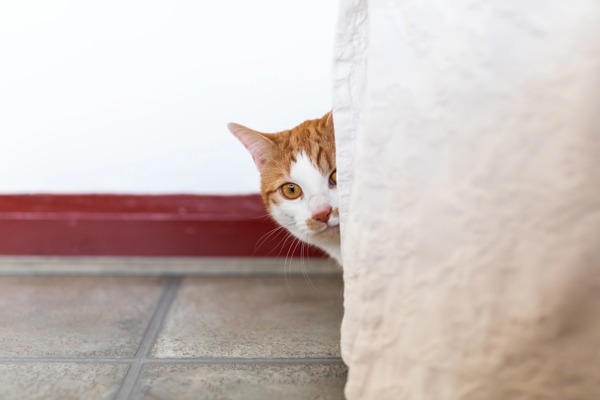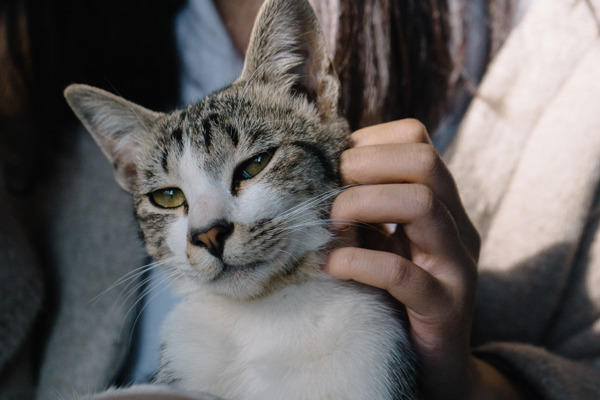Some cats may feel stressed when they are left alone but there’s lots you can do to help them
Cats are usually quite happy to spend time in their own company. But they can experience separation-related issues and loneliness when their owner is not home. This can lead to unwanted behaviours. Play is one way you can help prevent this, to make sure your cat is happy at home and doesn't get bored.
“In recent years many people bought or adopted pets at times when they were home the majority of the day,” says Nicky Trevorrow, a Clinical Animal Behaviourist. “Now, as people are working out of the home more and holidays are back in full swing, some pet owners may find that their pets experience separation-related behaviours and loneliness.”
Can cats get separation anxiety?
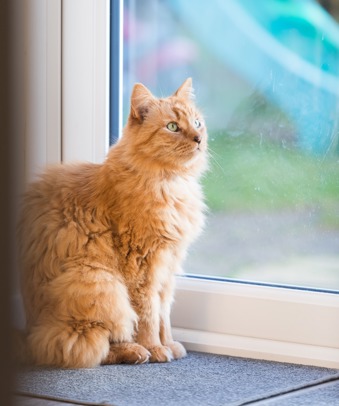
Separation anxiety, or separation-related behaviour, occurs more commonly with dogs. They are an innately social species and so have to learn that it’s alright to be left at home alone. If they are not taught this, they may become distressed when left and display unwanted or destructive behaviours.
Cats are more solitary by nature, and so usually don’t mind being left alone for a while. But they are also creatures of habit and routine. If their routine suddenly changes (for example, their owner starts leaving the house for long periods after having spent lots of time at home with them) they may experience separation-related frustration, similar to separation anxiety. This is likely to be more common in cats who have never been left alone in their current home for long periods.
In both cats and dogs, separation-related behaviours can be linked to when a particular member of the household leaves, even if other people are still around. So, even if you leave your cat with someone at home, you may still notice changes in their behaviour.
Signs of separation anxiety in cats
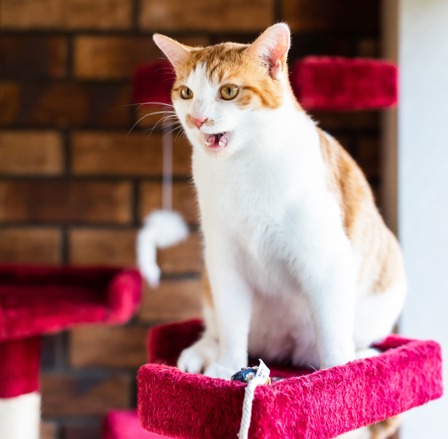
To find out if your cat is becoming anxious or frustrated when left alone, you could try setting up a camera to record video of them while you are not home. Look for evidence of the following signs:
- restlessness/unable to settle
- excessive vocalisation/meowing
- being more startled than normal by loud noises/other disturbances
- refusing their food
- hiding more than usual
- toileting outside of the litter tray
- excessive scratching at furniture and furnishings
- in extreme cases, vomiting or diarrhoea
If you notice a change in your cat’s behaviour, take them to the vet as there could be a medical cause that needs investigating. If your cat is otherwise healthy, then they may be experiencing separation-related issues.
“Some pets will take changes in their stride and not be too bothered about you coming and going," says Nicky. “But other pets may find this more challenging to cope with, particularly pets that don’t have much experience of being alone.
“Cats can feel fearful, anxious, frustrated, bored or even depressed, all emotions that cause stress. It’s important to understand your cat’s underlying emotions as this can help you understand how they are coping with any sudden changes.”
How to help your cat with separation anxiety
1. Introduce a regular routine
Cats are creatures of routine, and they find sudden changes stressful. Keeping to a regular routine of feeding times, playtimes, rest times and so on can help them feel more relaxed.
2. Give them opportunities to play alone
Cats are natural hunters. They need a lot of mental and physical stimulation. Try leaving toys out for them to play with, cardboard boxes for them to explore or hide in and use puzzle feeders for their mealtimes. You can even pop a couple of spoonfuls of dried catnip into an old sock, securely knot and give it to your cat as a toy.
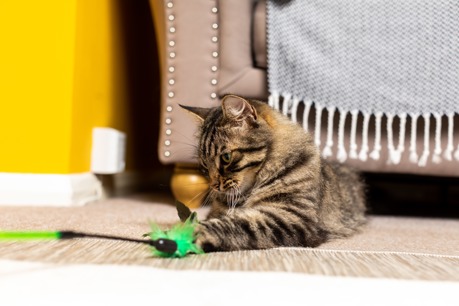
3. Have playtime before you leave
You can help your cat burn off some energy by engaging them in some playtime before you leave. Try using a fishing rod toy. Cats love chasing them around and taking part in this energetic game. Ensure the toy is safely stored out of your cat’s reach afterwards. Find out how to play with your cat.
4. Give them safe access to outside
Cats like to prowl and explore their territory. Where safe and possible, ensure your cat has easy access to a cat flap. Find out more about cat flaps. If your cat has been microchipped, you could install a microchip cat flap in your home. These identify cats trying to enter your home by scanning their microchip. They will only allow entry to those whose microchip number you have programmed into the cat flap. A great buy for those looking to exclude intruders. Get a discount on microchip cat flaps from Sure Petcare.
5. Help them to feel safe when left alone
Cats feel the most secure when they can get up high and survey their surroundings. Make sure your cat has somewhere to safely get up high. A cat tower, clear windowsill or shelf will do. Leaving the radio or television on a low volume may help some cats relax. You could also use a pheromone diffuser, such as FELIWAY®, that emits calming cat pheromones. Find out more about FELIWAY®.
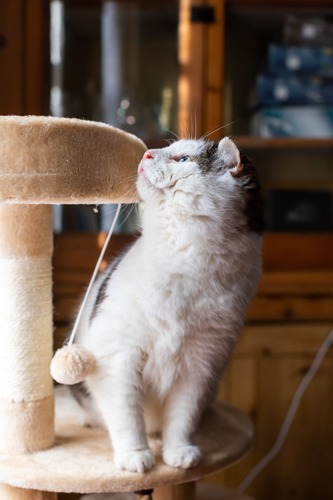
6. Don’t make a big deal of leaving
It might make us feel better to shower our pet with hugs and kisses before we leave but it can actually make them feel more stressed. Instead, make minimal fuss so your moggy doesn’t feel too stressed about you leaving.
7. Make changes gradually
If you think that your cat is showing signs of separation-related frustration, it is important to gradually increase the amount of time you leave them. This will help them adapt more easily. Remember, 15 minutes may not seem like long to us, but for an animal frustrated by being left alone that can be a long time. Start by leaving them for as short an amount of time as possible. Stand outside the front door for a few minutes before returning, and gradually build it up from there.
8. Prepare early
If you are currently spending a lot of time at home but know that will be changing soon (for example, you’re returning to the office after working from home), start preparing your cat as soon as possible. Begin leaving them for five minutes at a time and build it up gradually in increments that your cat is comfortable with.
Find more help and advice on helping your cat cope with stress.

